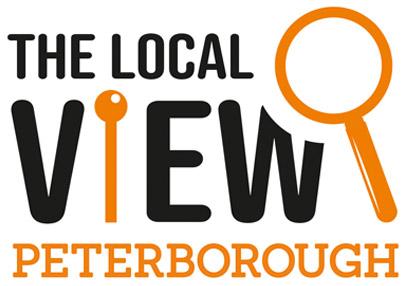Around ten percent of the population is estimated to be dyslexic according to the British Dyslexia Association, yet it remains a misunderstood condition. Dyslexia impacts people in various ways. For dyslexic employees, this translates to potentially needing to exert more effort than their colleagues to meet the job requirements.
Employers are being encouraged to recognise the advantages of what some refer to as ‘dyslexic thinking,’ which includes creativity and problem-solving abilities. This article explores the legal responsibilities of employers and provides practical suggestions to assist dyslexic job seekers and employees.
What is dyslexia?
Dyslexia is described on the NHS website as “a common learning difficulty that mainly causes problems with reading, writing and spelling.”
They list signs of dyslexia as being a person who may:
- read and write very slowly
- confuse the order of letters in words
- be confused by letters that look similar and write letters the wrong way round (such as “b” and “d”)
- have poor or inconsistent spelling
- understand information when told verbally, but have difficulty with information that’s written down
- find it hard to carry out a sequence of directions
- struggle with planning and organisation
Legal obligations for employers
There are 9 protected characteristics covered by discrimination law Equality Act 2010 (EqA 2010)) and disability is one of them.
The EqA 2010 sets out the requirements that must be met for an individual to be deemed to have a disability. Dyslexia has been acknowledged by employment tribunals as a potential disability along with other common neurodiversity, including autism. This recognition can provide dyslexic individuals with the safeguards outlined in the EqA 2010. For protection, dyslexia must have a substantial and long-term adverse effect on the individual’s ability to carry out normal day-to-day activities.
Discriminating against disabled employees or job applicants can manifest in various ways:
Direct discrimination
This is when someone is put at a disadvantage or treated less favourably as a result of:
- their disability e.g. an individual applies for a job but is told that they have not been offered an interview because they have a disability.
- a connection with someone with a disability (discrimination by association).
a believe by someone that the individual has a disability when they do not (discrimination by perception).
Indirect discrimination
This can happen when an employer applies a provision, criteria , or practice that disadvantages individuals with a disability without objective justification.
Discrimination arising from disability
This is when an individual is discriminated against as a result of something that results from a disability, not the disability itself e.g. needing regular rest breaks.
Failure to make reasonable adjustments
An employer’s duty to make reasonable adjustments can arise when a provision, criteria or practice applied by the employer puts a disabled person at a substantial disadvantage in comparison with those who are not disabled.
Harassment
This is when an individual experiences unwanted behaviour related to their disability and the behaviour violates the individual’s dignity or creates an intimidating, hostile, degrading, humiliating or offensive environment for the individual.
Victimisation
This is when an individual is treated less favourably because they have or intend to do any of the following protected acts:
- bring proceedings under the EqA 2010.
- give evidence or information in connection with proceedings under the EqA 2010.
- do any other thing for the purposes of or in connection with the EqA 2010.
make an allegation that the discriminator or another person has contravened the EqA 2010. An employer cannot be liable for direct disability discrimination, discrimination arising from disability, a failure to make reasonable adjustments and, arguably, disability harassment unless they know, or ought reasonably to have known that the employee was disabled.
Reasonable adjustments in the workplace for employees with dyslexia
Reasonable adjustments involve taking measures to enhance an individual’s strengths and reduce challenges related to a disability. These accommodations will be tailored to the employee’s requirements and the responsibilities of the role.
Employers should openly discuss any planned adjustments with the employee and ask for any suggestions they may have about what could improve their work environment. What works well, will vary based on the individual.
Employers are required to make reasonable adjustments to make sure that individuals with a disability are not substantially disadvantaged. Several factors influence what is deemed reasonable, such as the cost to the employer and the effectiveness of the action in addressing the employee’s disadvantage.
Ideally any adjustments should be talked over with the individual and regularly assessed to ensure their effectiveness.
Examples of what employers can do for an employee with dyslexia
The below has been directly taken from the British Dyslexia Association:
Written Communications
- Give verbal as well as written instructions (this also applies to using voicemail rather than, or as well as, written memos)
- Consider assistive technology such as a screen-reader, scanning pen, text to speech or mind-mapping software
- Provide all hard copy resources on coloured paper (find out which colour helps the person to read best)
- Highlight key points in documents
- Allow plenty of time to read and complete the task
- Use different formats to convey information e.g. audio or videotape, drawings, diagrams and flowcharts
- Use a digital recorder to record meetings, training etc so the employee doesn’t have to rely on memory or written notes
- Don’t ask your dyslexic employee to minute a meeting
Computer work
- Change background colour of screen to suit individual preference
- Supply anti-glare screen filter
- Allow frequent breaks, at least every hour
- Alternate computer work with other tasks, where possible
Verbal communication
- Communicate instructions slowly and clearly and minimise distractions, and check understanding
- Support important communications by supplying the information in more than one format e.g. verbally and using hard copy resources
- Encourage note-taking
- Offer the use of a digital recorder to record important instructions
- Back up multiple instructions in writing or with diagrams
Concentration
- Reduce distractions for focused tasks (sit away from doors, noisy machinery etc)
- Allocate a private workspace if possible
- Where feasible allow an employee to work from home occasionally
- Provide a quiet working environment for a dyslexic employee by allocating libraries, file rooms, private offices and other enclosed areas when others are not using them
Memory
- Calendars, planners and alerts are standard on most computers and phones. Some people also find physical calendars and wall planners useful
- Use mnemonic devices and acronyms
General considerations
- Supply a talking calculator if there are numerical difficulties
- Ensure that work areas are organised, neat and tidy
- Ensure the team returns important items to the same place each time
- Ensure work areas are well lit
Driving
- Always try to use the same route
- Show the route and visible landmarks
- Give time to practise going from one place to another
- Supply detailed maps
- Supply GPS car navigation system
How can Hegarty help?
Hegarty can offer guidance on making sure your procedures, particularly your business’ recruitment process are dyslexia-friendly, along with providing practical recommendations for handling individual cases. This assistance can prevent expensive claims and support your journey to becoming a more inclusive employer.
On the other hand, if you are already facing a claim of discrimination from an employee, we can provide you with practical, realistic advice on the best way to proceed.
Written by Katie Bowen Nicholas from Hegarty, members of Peterborough Business Directory.





